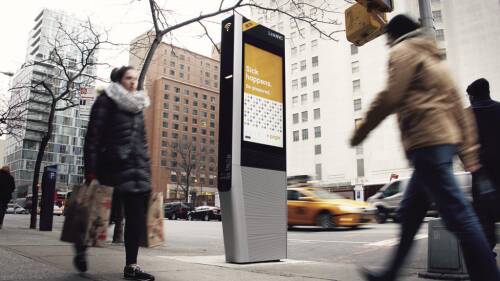Innovation Districts & Corridors
Free public wi-fi and charging stations are being deployed through outdoor public furniture and fixtures—benches, shelters, streetlight poles, trash cans, and other common features.
Jane Jacobs, best known as the author of Death and Life of American Cities, would have celebrated her 100th birthday this year. A new biography, Becoming Jane Jacobs, by Clemson University professor Peter Laurence purports that the most venerated figure in urban planning today is also among the most underappreciated and misunderstood, even by her staunchest supporters.
“Suburbs isn’t a dirty word,” declared Adam F. Ducker, RCLCO managing director and moderator of the “Next Stop Suburbs” session at the ULI Spring Meeting in Philadelphia.
It could be a bumpy first half of the year for retail real estate: Despite continued improvement in key fundamentals and a strengthening U.S. economy, the retail sector is bracing for a bigger shake-out in store closures in the next few months.
With 2016 under way, I am very excited and hopeful about the changes taking place at ULI this year. We are continuing to move forward in three key areas: 1) a new global governance structure;
2) a major new information technology initiative; and 3) a relocation into a new workplace in Washington, D.C.
2) a major new information technology initiative; and 3) a relocation into a new workplace in Washington, D.C.
When the Pritzker Architecture Prize jury selected Alejandro Aravena of Santiago, Chile, as the 2016 laureate, it was not only for what Aravena designs, but also for what he does not design. The firm for which he serves as executive director, Santiago-based Elemental, has earned international attention for designing low-cost social housing that provides “half a house”—a home that people can inhabit, plus a framework that allows them to double the size of their dwellings as they have time and resources.
Over the past decade, innovation districts have been popping up around the globe, from Barcelona to Seattle. Although there is no “cookie cutter” formula to these technology-centric developments, they do have some elements in common, including a major anchor institution and a shared goal of bringing together a mix of uses within a dense urban setting.
In the coming years, it will be possible to access mountains of aggregated market data and do real-time valuations for industrial, retail, and office properties; and buildings will be traded online the way that stocks are traded now. That is the world envisioned by a panel of real estate information technology providers at ULI’s 2015 Fall Meeting in San Francisco, and they expect to see it happening in the next few years.
Could a 220-square-foot (20 sq m) apartment be a housing solution for low- and middle-income residents in high-cost cities? What about modular housing on city-owned land? Or single-family homes reengineered to house more people? These were some of the possibilities discussed by a panel of experts at the ULI Fall Meeting in San Francisco last week.
Bill Freeman sets out for his morning strolls early. The avid Boise, Idaho, walker strategically navigates the city’s north Vista Avenue corridor, avoiding certain difficult intersections.







